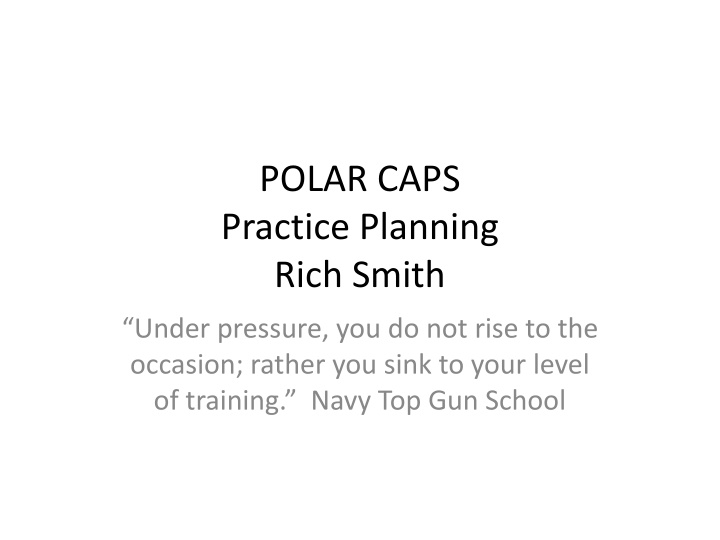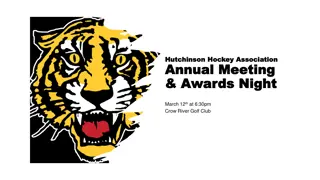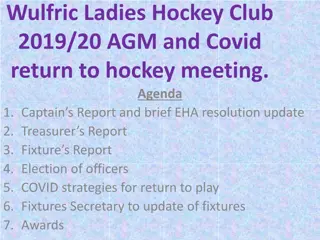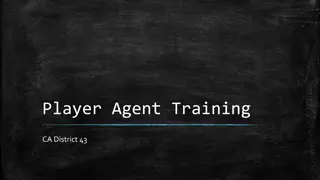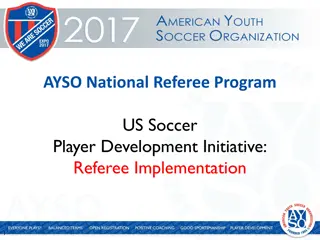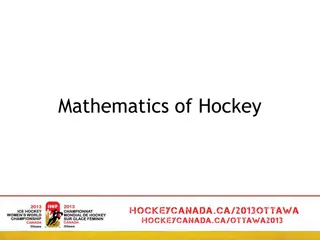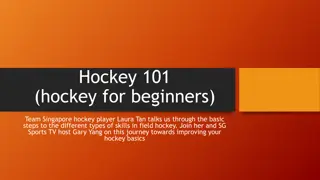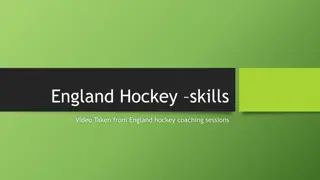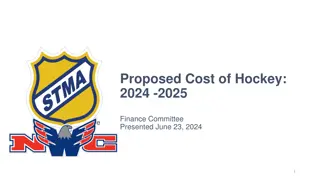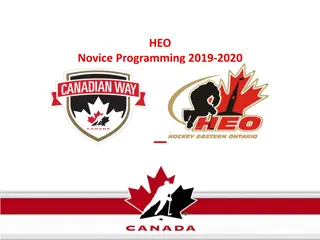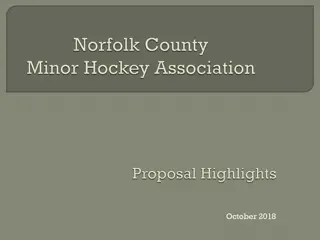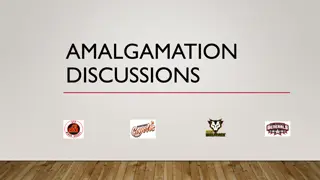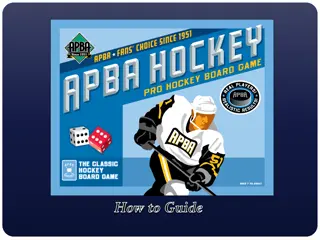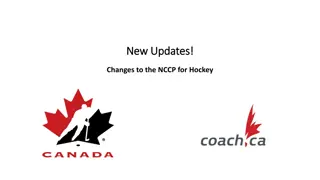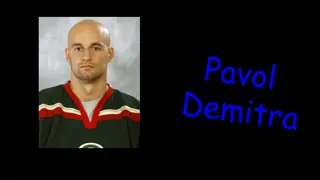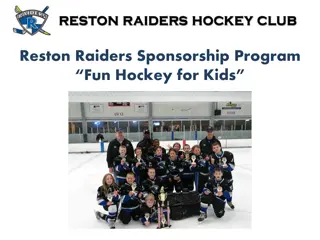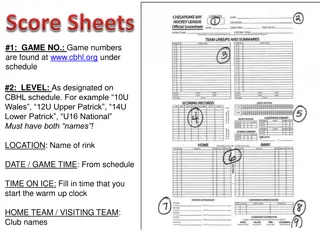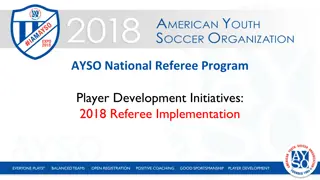Hockey Planning and Player Development Insights
Explore the philosophy of Polar Caps hockey training, focusing on skill development, evaluation strategies, space, time management, equipment availability, and coaching structure. Dive into the principles of perfect practice, planning components, and the key aspects of producing top-tier players. Learn how to optimize practice sessions and game performance for continuous improvement.
Download Presentation

Please find below an Image/Link to download the presentation.
The content on the website is provided AS IS for your information and personal use only. It may not be sold, licensed, or shared on other websites without obtaining consent from the author.If you encounter any issues during the download, it is possible that the publisher has removed the file from their server.
You are allowed to download the files provided on this website for personal or commercial use, subject to the condition that they are used lawfully. All files are the property of their respective owners.
The content on the website is provided AS IS for your information and personal use only. It may not be sold, licensed, or shared on other websites without obtaining consent from the author.
E N D
Presentation Transcript
POLAR CAPS Practice Planning Rich Smith Under pressure, you do not rise to the occasion; rather you sink to your level of training. Navy Top Gun School
What Types of Players are we trying to produce? https://www.youtube.com/watch?v=4ChOFkw B0q0
How do we get there? Practice does not make perfect. Only perfect practice makes perfect. Vince Lombardi www.youtube.com/watch?v=d29VsG35DQM
Components of Planning Philosophy Evaluation Player/Team/Game/Practice Space Time Equipment availability Number of coaches Organization
Polar Cap Philosophy We added extra practice sessions at almost every level this year to improve the skill level of our players. At least 75% of your weekly practice time should be devoted to skill development. What is skill development? Skating Passing Shooting
Evaluation If Practices are the lessons, games are the test. How do we do on the tests? What do our players need to improve on? What do we need work on as a team? If we can not break out, why is that happening? What do we struggle with in practice?
Space What Rink are we practicing on? MIA Main MIA Studio Shell How many teams are on the ice? Can we split the ice in a different way to work for what we want to accomplish?
Time How many practices will you have this week? How much time will you devote to different aspects of the game? Puckhandling? Skating? Shooting? Passing Team Play SAG s
Equipment What equipment is available for you to use? Pucks Tires Cones Rings Mini Nets Multiple Big Nets Skating Aids Ropes Shooter Tutors Heavy Pucks Markers
Coaches How Many coaches will be on the ice with you? Make sure they all have a job.
Organization How will you group your team? How will you split up the ice? What can you do to create MAXIMUM participation?
The Good Stuff Plenty of good stuff out there, we just need to find it. http://www.minnesotahockey.org/page/show /84462-skating-and-puck-handling http://www.minnesotahockey.org/page/show /922547-body-contact-and-checking http://www.minnesotahockey.org/page/show /922582-age-specific http://www.minnesotahockey.org/page/show /922583-more-videos
More Sites https://www.youtube.com/watch?v=5iEIdCo- Zug&list=PL11569B627057F442&index=10 https://www.youtube.com/watch?v=QLCmEKL KlfQ https://www.youtube.com/watch?v=Jod0DMx xc3k https://www.youtube.com/watch?v=1SHCRXl 1PP0
Final Thoughts It is incumbent on a coach or club that their youngest players, often only 4-5 years old, develop a relationship with the ball, one where successful manipulation and retention of the ball becomes second nature. If this relationship is not developed there will be major limitations in the ability of that player to progress beyond a certain point. The demands of sophisticated tactical play will be beyond them because they will not trust their feet enough to execute the requirements. The 4 Pillars of Youth Coaching A well-rounded approach to developing a well- rounded player by Ken Sweda | Monday, August 20, 2012
Winning is the byproduct of many factors. One of the most important factors is well constructed and executed practices.
